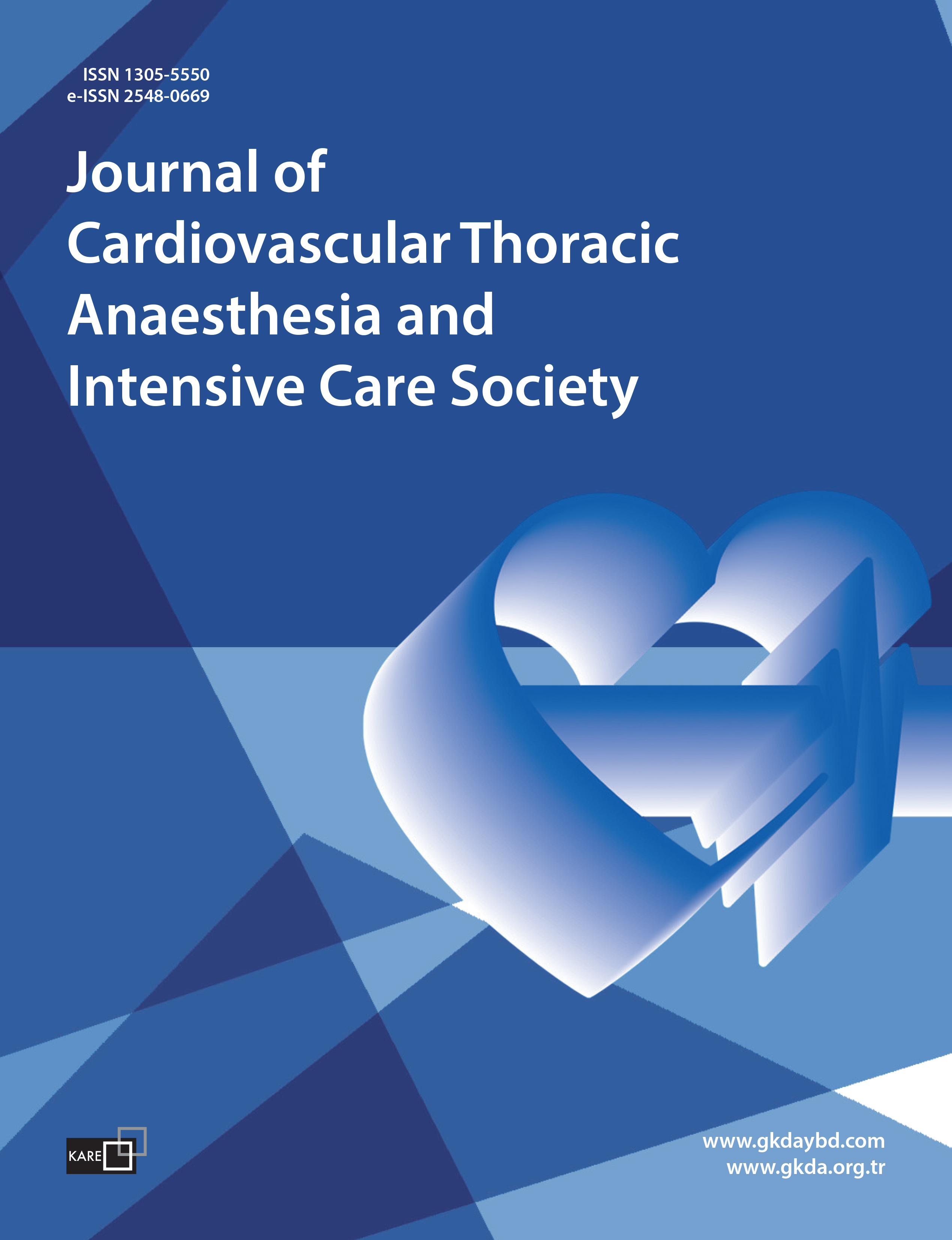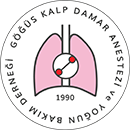

Transtorasik Ekokardiyografinin Spinal Anestezi Sonrası Hipotansiyonu Öngörmede Değeri
Ferdi Gülaştı1, Sevil Gülaştı2, Ibrahim Girgin3, Sinem Sari41Bursa Şehir Hastanesi, Anesteziyoloji Ve Reanimasyon, Bursa, Türkiye2Bursa Çekirge Devlet Hastanesi, Kardiyoloji, Bursa, Türkiye
3Gediz Devlet Hastanesi, Genel Cerrahi, Gediz/Kütahya, Turkey
4Adnan Menderes Üniversitesi Tıp Fakültesi, Anesteziyoloji Anabilim Dalı, Aydın, Türkiye
GİRİŞ ve AMAÇ: Spinal anestezi (SA), sempatik denervasyon nedeniyle hipotansiyona yol açabilir, bu da periferik vazodilatasyon ve intravasküler kanın yeniden dağılımının bir sonucu olarak kalbe venöz dönüşte azalmaya neden olur. Transtorasik ekokardiyografi (TTE), kalp rezervini ve fonksiyonlarını görselleştirmek için invaziv olmayan ve kullanımı kolay bir yöntemdir. TTE ile elde edilen parametrelerin SA sonrası hipotansiyon gelişimini belirleyici olup olmadığını değerlendirmeyi amaçladık.
YÖNTEM ve GEREÇLER: Kasık fıtığı ameliyatı geçirecek SA altındaki, ASA fiziksel durumu I-II olan ve klinik olarak tanınan kardiyovasküler hastalığı olmayan 18-80 yaş arası 42 hasta çalışmaya dâhil edildi. Her hastaya ameliyattan 30 dk. önce TTE uygulandı ve intraoperatif hemodinamik parametrelerle birlikte ölçümler kaydedildi.
BULGULAR: Spinal anestezi sonrası hipotansiyon durumuna göre sol ventrikül diyastol sonu çapının (LVEDD) (cm) medyanları arasında istatistiksel olarak anlamlı farklılık vardı (p=0.003); buna göre, hipotansiyon gelişmeyen hastaların LVEDD medyanı, hipotansiyonu olanlara kıyasla anlamlı derecede daha büyüktü. Benzer olarak sağ ventrikül (RV) global fonksiyonunu gösteren RV triküspit anüler düzlem sistolik hareket (TAPSE) medyanları arasında istatistiksel olarak anlamlı bir fark ortaya çıktı. SA sonrası hipotansiyon durumuna göre (p=0.001); buna göre, hipotansiyonu olmayan hastalar, hipotansiyonu olanlara kıyasla daha büyük bir RV-TAPSE medyanına sahipti. Sağ ventrikül diastolik fonksiyonlarından biri olan izovolümetrik gevşeme zamanı (RV-IVRT) medyanları arasındaki fark, SA sonrası hipotansiyon durumuna göre yine istatistiksel olarak anlamlıydı (p=0.025).
TARTIŞMA ve SONUÇ: Preoperatif TTE ile ölçülen TAPSE, RV-IVRT ve LVEDD, post-SA hipotansiyon gelişimini tahmin etmek için önemli parametreler olabilir.
Anahtar Kelimeler: spinal anestezi, hipotansiyon, transtorasik Ekokardiyografi, TAPSE, izovolumetrik gevşeme zamanı, sol ventrikül diyastol sonu çap
Value of Transthoracic Echocardiography in the Prediction of Post-spinal Anesthesia Hypotension
Ferdi Gülaştı1, Sevil Gülaştı2, Ibrahim Girgin3, Sinem Sari41Department of Anesthesiology And Reanimation, Bursa City Hospital, Bursa, Turkey2Department of Cardiology, Bursa Çekirge State Hospital, Bursa, Turkey
3Department of General Surgery, Gediz State Hospital, Gediz/Kütahya, Turkey
4Department of Anesthesiology, Adnan Menderes University Faculty of Medicine, Aydın, Turkey
INTRODUCTION: Spinal Anesthesia (SA) can lead to hypotension due to sympathic denervation, which causes a reduction in venous return to the heart as a result of peripheral vasodilation and redistribution of intravascular blood. Transthoracic Echocardiography (TTE) is a noninvasive and easy-to-use method to visualize cardiac reserve and functions. We aimed to evaluate whether parameters attained via transthoracic echocardiography are predictive of development of post-SA hypotension.
METHODS: Forty-two patients between the ages of 18 and 80, who would undergo inguinal hernia operation under SA, with ASA physical status I-II and had no clinically recognized cardiovascular disease, were included in the study. TTE was performed for each patient 30 minutes before the operation, and measurements were recorded along with the intraoperative hemodynamic parameters.
RESULTS: There was a statistically significant difference between the medians of left ventricle end-diastolic diameter (LVEDD) (cm) according to the status of post-SA hypotension (p=0.003).Accordingly, median LVEDD of patients who did not develop hypotension was significantly larger compared with that of those who had hypotension. Similarly, a statistically significant difference emerged between the medians of right ventricular (RV) tricuspid annular plane systolic excursion (TAPSE) (cm) showing RV global function according to the status of post-SA hypotension (p=0.001). Accordingly, patients who did not have hypotension had a larger RV-TAPSE median compared with that of those who had hypotension. The difference between the medians of RV isovolumetric relaxation time (RV-IVRT), which is one of the indicators of RV diastolic functions was again statistically significant according to the status of post-SA hypotension (p=0.025).
DISCUSSION AND CONCLUSION: TAPSE, RV-IVRT and LVEDD measured via preoperative TTE, can be significant parameters to predict the development of post-SA hypotension.
Keywords: spinal anesthesia, hypotension, transthorasic echocardiography, TAPSE, isovolumetric relaxation time, left ventricle end diastolic diameter
Makale Dili: İngilizce
(1081 kere indirildi)

















